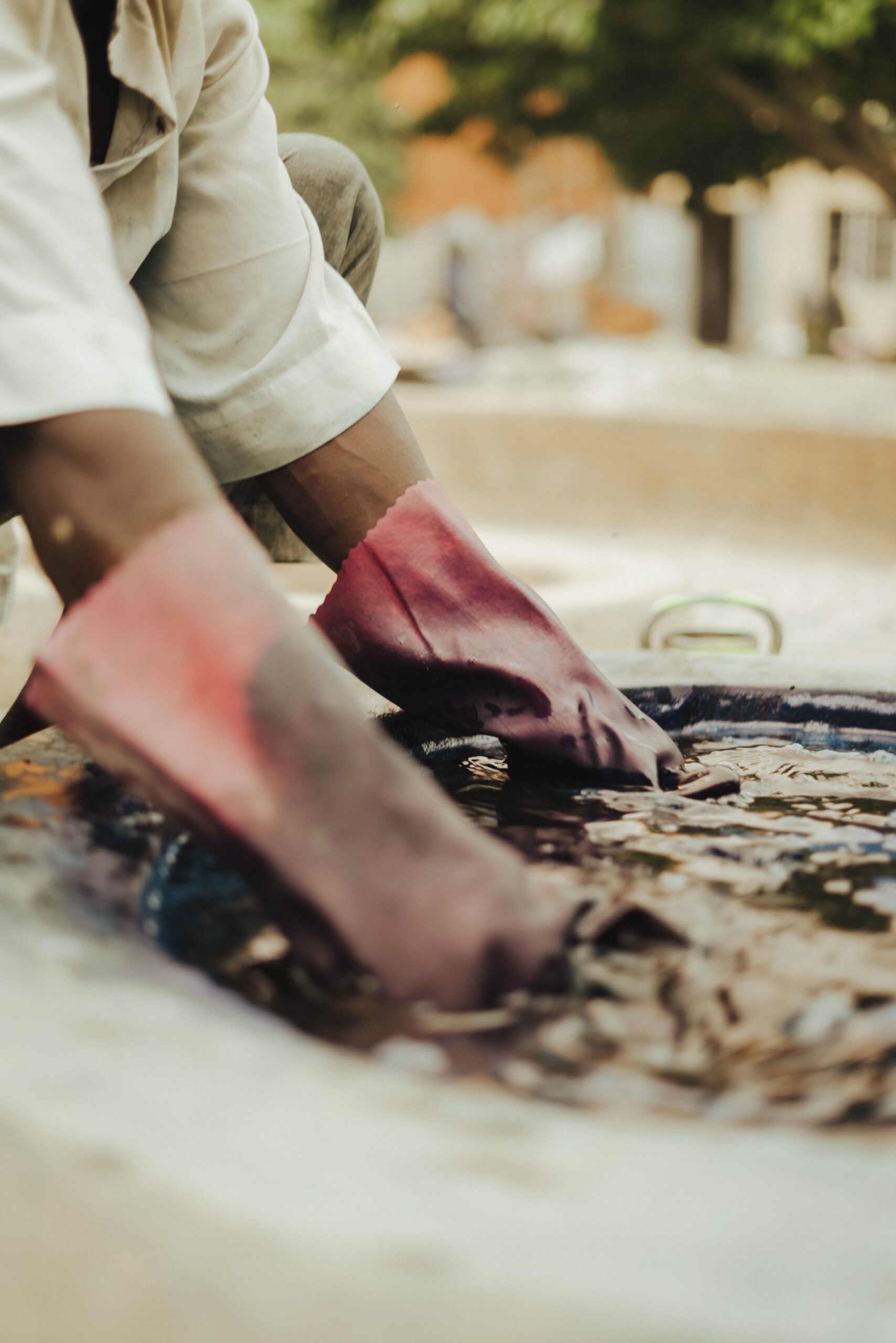
Have you ever wondered if dry cleaning can shrink your clothes? While there is a common misconception that dry cleaning causes clothing to shrink, it is actually a practical method of maintaining the quality of delicate fabrics. In this article, we will explore the complexities of the dry cleaning process and determine if shrinkage is a potential outcome. We will also discuss the factors that contribute to shrinkage and the precautions that dry cleaners take to prevent it. By understanding these aspects, you can ensure that your clothes are properly cared for without the worry of unwanted changes in size. So let’s dive into the world of dry cleaning and debunk the myth of shrinking clothes.

Understanding the Dry Cleaning Process
It’s important to understand the dry cleaning process in order to determine if it can cause clothing shrinkage. Dry cleaning is a method of clothing maintenance that uses chemical solvents instead of water to clean delicate fabrics. The most commonly used chemical solvent is perchloroethylene (perc), which effectively removes oils, dirt, and stains from textiles. The process involves pre-treating stains, immersing the clothing in the solvent, and then using specialized equipment to dry the clothing without water contact.
Factors Contributing to Shrinkage
Contrary to popular belief, dry cleaning itself is not inherently responsible for causing clothing shrinkage. Shrinkage in clothing usually occurs due to various factors, some of which can be indirectly linked to the dry cleaning process:
-
Fabric Characteristics: Different fabrics have different reactions to various cleaning methods. Natural fibers like wool and cotton are more prone to shrinkage than synthetic fabrics like polyester or nylon. When dry cleaning solvents are applied correctly, they are generally gentle on fabrics and less likely to cause shrinkage.
-
Temperature and Agitation: Excessive heat and mechanical agitation can contribute to shrinkage. Although dry cleaning machines do not use water, they do utilize heat during the drying stage. However, professional dry cleaners are trained to control these parameters to minimize the risk of shrinkage.
-
Quality of Equipment and Techniques: The choice of dry cleaning equipment and the expertise of the dry cleaner are crucial factors. High-quality machines and skilled professionals are more likely to handle delicate fabrics without causing shrinkage.
Preventing Shrinkage
Dry cleaners take several precautions to prevent shrinkage during the cleaning process. These measures ensure that clothing retains its original size and shape:
-
Professional Inspection: Before dry cleaning, garments undergo a thorough inspection to identify any existing damage, weak seams, or potential issues that may lead to shrinkage. This allows the dry cleaner to take necessary precautions and handle the clothing with care.
-
Temperature Control: Modern dry cleaning machines are equipped with precise temperature controls. Professional dry cleaners ensure that the temperature is kept within safe limits to avoid shrinkage, even during the drying process.
-
Experience and Expertise: Reputable dry cleaners have extensive knowledge and experience in handling a wide range of fabrics. They understand the nuances of different materials and employ techniques that minimize the risk of shrinkage.
Conclusion
In conclusion, dry cleaning itself is not a direct cause of clothing shrinkage. The risk of shrinkage is more closely tied to the characteristics of the fabric, the quality of the dry cleaning equipment, and the expertise of the professionals handling the process. By choosing a reputable dry cleaner and communicating any concerns about delicate fabrics, the likelihood of shrinkage can be further diminished. With proper care and attention to detail, dry cleaning remains a reliable method for maintaining the quality of garments without causing unwanted changes in size.
Related Guide: Does dry cleaning shrink clothes

Can you put pillows in the washer
For pillow cleaning, it is generally not recommended to put them in the washer. The agitation and water exposure in a washing machine can potentially flatten the filling or make it clump together, resulting in a lumpy and misshapen pillow. Additionally, certain pillow types, such as down or memory foam pillows, may not be suitable for machine washing due to their delicate nature or specific care instructions.
To clean pillows, it is often recommended to follow the manufacturer’s care instructions. Many pillows can be spot cleaned using mild detergent and warm water. For deep cleaning, professional dry cleaning or using a pillow-specific cleaning product may be a better option. It’s important to always check the care label and consider the specific type of pillow before deciding on the cleaning method.
How to get rid of smelly shoes
Smelly shoes can be a common problem, especially if they are frequently worn or not properly cared for. Here are some tips to help get rid of the unpleasant odor:
-
Allow Shoes to Air Out: After wearing your shoes, give them time to air out. Remove the insoles if possible and place the shoes in a well-ventilated area to allow air circulation. This will help reduce moisture buildup and prevent bacterial growth.
-
Use Baking Soda: Sprinkling baking soda inside the shoes can help absorb and neutralize odors. Leave the baking soda in overnight and then shake or brush it out the next day. Repeat as necessary.
-
Freeze the Shoes: Freezing can kill odor-causing bacteria and eliminate foul smells. Place the shoes in a plastic bag and seal them tightly. Leave them in the freezer overnight, and then thaw them before wearing.
-
Use Odor Eliminating Products: There are various odor eliminating products available, such as shoe deodorizing sprays or inserts. These can help freshen up the shoes and eliminate lingering smells.
-
Wash or Replace Insoles: If the smell persists, consider washing or replacing the insoles of your shoes. Insoles can absorb sweat and odors over time, leading to unpleasant smells.
-
Maintain Good Foot Hygiene: Proper foot hygiene can also help prevent smelly shoes. Make sure to wash your feet regularly and wear clean socks made of breathable materials. Avoid wearing the same pair of shoes every day to allow them time to dry out completely.
By following these tips, you can effectively eliminate odors and keep your shoes smelling fresh.

Fabric Characteristics
The characteristics of fabrics play a significant role in how they react to different cleaning methods, including dry cleaning. Some fabrics are more prone to shrinkage than others, and understanding these characteristics can help determine the appropriate cleaning technique. Here are a few fabric characteristics to consider:
-
Natural Fibers: Fabrics made from natural fibers like wool, cotton, silk, or linen are generally more susceptible to shrinkage. These fibers have unique structures that can contract when exposed to heat or moisture. Dry cleaning solvents, when used correctly, are typically gentle on natural fibers and less likely to cause shrinkage compared to water-based cleaning methods.
-
Synthetic Fibers: Fabrics made from synthetic fibers like polyester, nylon, or acrylic are less prone to shrinkage. Synthetic fibers are created to be more resistant to heat and moisture, making them more durable and less likely to shrink when exposed to dry cleaning solvents.
-
Blended Fabrics: Many fabrics nowadays are blends of natural and synthetic fibers. The shrinkage potential of a blended fabric can depend on the ratio of natural to synthetic fibers. Fabrics with higher proportions of synthetic fibers tend to be more resistant to shrinkage.
-
Weave and Knit: Different weaving or knitting techniques can affect fabric behavior. Tighter weaves or knits typically offer more stability and less likelihood of shrinkage compared to looser ones.
It’s important to pay attention to the label instructions and consult with a professional dry cleaner for specific fabric care recommendations. They will have the expertise to handle different fabric types and minimize the risk of shrinkage.
Experience and Expertise
The experience and expertise of a dry cleaner can greatly influence the outcome of the cleaning process, including the potential for shrinkage. Dry cleaners who have extensive knowledge and training in handling a wide range of fabrics are equipped to minimize the risk of shrinkage. Here’s how experience and expertise come into play:
-
Understanding Fabric Types: Experienced dry cleaners have in-depth knowledge of various fabric types. They understand the characteristics, care requirements, and potential risks associated with different fabrics. With this knowledge, they can choose appropriate cleaning methods and adjust parameters to minimize shrinkage.
-
Equipment Knowledge: High-quality dry cleaning machines and equipment are essential for preventing shrinkage. Experienced dry cleaners are familiar with the proper use and maintenance of these machines, ensuring that temperature, agitation, and other variables are carefully controlled to prevent shrinkage.
-
Quality Control: Reputable dry cleaners have established quality control processes to ensure that garments are handled correctly. This includes inspecting garments before and after cleaning, following specific care instructions, and training staff to handle delicate fabrics with care.
-
Problem Solving: Experienced dry cleaners have encountered various cleaning challenges and have developed problem-solving skills. They can identify potential issues that may cause shrinkage and take necessary precautions to protect the garments.
Choosing a dry cleaner with a proven track record and positive customer reviews can provide peace of mind when it comes to preserving the quality of your clothing and minimizing the risk of shrinkage.
In conclusion, dry cleaning itself is not a direct cause of clothing shrinkage. The risk of shrinkage is influenced by factors such as fabric characteristics, temperature and agitation, and the expertise of the dry cleaner. By understanding these factors and following proper preventive measures, such as choosing a reputable dry cleaner and communicating any concerns about delicate fabrics, you can ensure that your clothing remains in its original size and shape after the dry cleaning process. Dry cleaning continues to be a reliable method for maintaining the quality of garments without causing unwanted changes in size.





